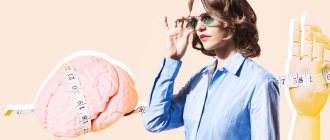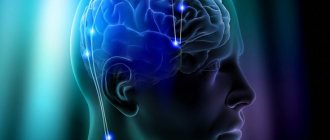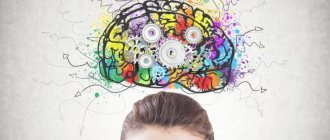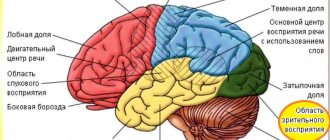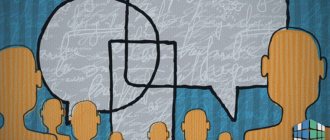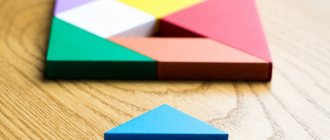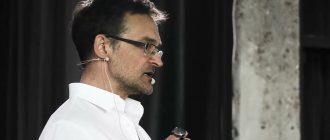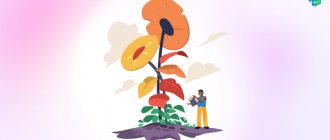We see a lot of things, but at the same time we do not notice everything, and all because we have not developed the skills of observation, which, first of all, consists in our ability to see the main properties of various objects and people. But there is good news - it’s never too late to engage in self-development, you can start right now, and our article will tell you in which direction to move.
An outside observer can sometimes understand a situation better than someone who is part of it. Roger Zelazny. Chronicles of Amber
General concepts
If you approach someone from your family and ask them to describe in detail what a garage at their dacha looks like, you will be surprised that people simply do not pay attention to some seemingly obvious details. Someone will speak out against it and say that paying attention to details is an overload of memory and cluttering the brain with unnecessary information. On the one hand, this is true, but on the other hand, it is a good habit. Firstly, such skills will allow you to quickly grasp the essence and make an analysis, and secondly, they can be an excellent help in resolving unfavorable situations. So character traits or personality traits such as attention and observation are more important than ever.
What is mindfulness and attention?
First of all, mindfulness presupposes a certain attitude towards the people around you. This is not only the ability to observe, but also to react in a timely manner to the state of others, to be sensitive and understanding. Mindfulness has a significant impact on cognitive functioning, intelligence and intelligence, and also has a positive effect on work performance. But the concept of “attention” already has a different character - it is a selective focus on a specific object and complete concentration on it.
What is observation
First of all, this concept reflects a person’s ability to pay attention to the essential properties and details of both people and phenomena and objects. And if many people believe that the ability to notice even the smallest details is a useless skill, then they are deeply mistaken, because observation is important both in the professional sphere and in life in general.
Why develop observation skills?
This skill is important in life. Psychologists highlight specific reasons why every person should pay attention to the development of observation:
- First of all, observation makes it possible to understand much better everything that is happening around, what is hidden from the eyes of ordinary people. The ability to see similarities in different things and differences in the same is a real art.
- The development of observation helps to reveal the potential, the essence of another person, and also allows you to foresee his future actions.
- A high level of observation allows people to quickly assess the situation and make an informed decision.
- Observation is a source of inspiration, new ideas, the ability to see something new in familiar things. Many great scientists, artists, writers, inventors created precisely because they were able to see something new and bright in the dullness.
Today, observation is the basis of most professions. Keeping abreast of events and not getting lost in the gray mass is the task of modern society.
Why do we need observation?
In fact, not a single person can do without such a quality as observation, because it is with its help that we more clearly understand exactly what events are happening around us. If we work on its development, then over time we will be able not only to understand the essence of other people, but also to predict their behavior.
In addition, developed powers of observation can help us make the right decisions in a minimum amount of time.
.
Also, of course, without such a useful skill, humanity would never have learned to read each other’s emotions
.
How to develop observation skills?
The level of observation is directly proportional to the level of memory development. So how can you learn to truly see? It is worth noting that to develop a skill, you should not only remember what you saw or heard in detail, but also pass the received information through yourself. Never close yourself off from new knowledge, be more receptive, and in the process of observation, do not forget to think and analyze so that the information received remains and does not disappear along with your thoughts. For example, K. G. Paustovsky, the great Russian writer, believed that the ability to “see” is based on the sensitivity of the visual analyzer. He wrote that observation is an acquired skill. You can train yourself with the following exercise. The Russian writer suggested that people look at everything around them every day for a month with the thought that right now you will need to draw in detail what you see. Look at people like this, at nature, at the objects and phenomena around you. You will be surprised how much you didn’t notice before, and after a while it will become a habit.
How to become observant
Observant people notice more than others. The world around them is revealed to them differently. For an observant person, the senses provide the consciousness with much more diverse information for reflection, analysis and cognition. They excite and nourish the intellect, saturating it with factual material for insightful mental activity. The world opens up to those who can see.
How to educate or develop your powers of observation?
To get started, try following the recommendations below. 1. Bring your awareness of observation guidelines to the usual level.
The main thing is to train yourself to recognize behind any external manifestations the internal process and system in which they function. Then try to determine what to focus on during further observation. For example, the person clearly lied. This is an external manifestation. What led to it? Immediately monitor the process of lying. The person could have been misled or misunderstood something. That is, the lie appeared already at the input of information into consciousness. Or he could decide to lie for some reason - this is already a functional product of his consciousness. Finally, it may be his established way of thinking. All these parameters can serve you for further monitoring. Follow them and record new external manifestations until you understand the true reason for the lie and, accordingly, develop your own correct actions in this situation.
Take this example as a template. At least once a day, analyze any noticeable external manifestation based on them, delving deeper into the essence of the internal process and the system that provides it. In this way, bring awareness of observation guidelines to the point of familiarity, to automaticity. Apply it more actively in life, especially in difficult situations.
2. Consistently lower your observation limit
Start at the visual limit of observation. For example, turn on the movie and wait for some intense scene (say, a lot of cars slowing down at a traffic light or colliding in an accident). Immediately press pause or freeze frame. Then look away from the screen and try to answer the following questions:
- how many cars?
- what models?
- what colour?
- Who are the drivers - men or women?
- approximately what age?
- What are you wearing, hairstyle?
- what facial expressions?
- what are the car numbers?
- how many people were standing on the street?
- how many of them are men and women?
- what age?
- What are you wearing, hairstyle?
- what facial expressions?
Now look at the screen and check the detail and accuracy of your observation. Repeat the training with the same scene until you can answer all the questions accurately or almost accurately. Try to catch any other smaller additional details.
Change the scene. Another stop at a traffic light, an accident, a crowd of people at a party, in an auditorium, or something similar. Make a similar list of questions and practice in the same way. Change scenes periodically and achieve:
- so that as many small details as possible are grasped the first time;
- so that by the end of working with a freeze frame, you can capture as small details as possible.
At the same time, reduce the auditory limit of observation. Doorbell. Try to determine who is calling by the nature of the call. Articulate the differences in family calls. But this is an unfamiliar call. Try to determine who is calling - a man or a woman, what age, etc. Then open the door and check the observations.
Footsteps are heard outside the window. Determine from them who is walking - a man or a woman, what age, etc. Look out the window and check your observations. Formulate the differences in the sound of the steps of a man, woman, child, elderly person, etc. Based on the person’s intonation, determine his mood and attitude towards you. Formulate based on what signs you did this.
3. Expand the completeness and detail of the first impression
Let's say you are crossing the street at an intersection. Cars slowed down at a red light. Take a look at them, take a closer look. When the light turned green, the situation fell apart. Now try to reproduce it and answer the same questions as in the previous training. Repeat and repeat the exercise, achieving a more complete and detailed recording of what you see.
Another variant. You enter a familiar classroom or office where several people are already present. Take ten to fifteen seconds to look closely and take in the room with your gaze. Then take a break from what you see, as if withdraw into yourself and try to answer approximately the same questions: how many people, men, women, what age, what are they wearing, hairstyle, facial expressions, etc. And one more question: what has changed since previous visit? Then take another look at the audience (office) and check the correctness and depth of your first impression. From training to training, reduce the time you cover with your gaze to a minimum, say, to two or three seconds, but achieving the same completeness and detail. Come up with some other similar trainings that may be more suitable and convenient for you.
Another exercise: the first impression of a person. When you see someone for the first time, try to immediately record and formulate as many details as possible of his appearance, facial expressions, intonation, character traits, manner of speaking and moving, etc. Practice this with every new acquaintance. Consistently achieve greater completeness and detail. Then, in the process of further relationships, check your initial impressions and conclusions.
4. Practice constant observation skills
Set yourself the following tasks:
- the main thing is to notice smaller and smaller details from observation to observation and, based on them, penetrate deeper into the essence of the process and the system that ensures its functioning;
- record changes occurring during observation.
To implement them, select such objects that will always be available for observation without any additional effort:
- for example, a younger brother or sister;
- your work colleague or boss;
- indoor flower or other plant.
Observe the subject as a whole, if it is a houseplant or something similar. Of course, it will be more difficult to observe a person in this way. Therefore, for the first training it is better to highlight one of the processes. Let's say, how does your brother or sister, colleague, boss communicate? Or how they work, do homework, etc. Record what you already know about this as a starting point. Decide on the guidelines for observation: where and what information about communication feeds consciousness from the outside, what conclusions the person came to himself and how this manifests itself at the exit from the system, in relationships, speech, actions, etc.
Then begin to notice smaller and smaller external manifestations: how quickly the object gets along with strangers, what methods does it use to maintain good relationships, what are the reasons and reasons for the breakup?
What is the nature of your relationships with colleagues or classmates, how many friends, enemies? Who has the most influence and who is subservient and why? What familiar words and phrases does he use in communication, and how often does he introduce new expressions? Does he skillfully use intonation, facial expressions, and gestures? Try to keep everything in your memory without overburdening yourself with notes.
5. Train routine observation skills
The tasks and techniques are similar to the previous ones, but the approach is somewhat different. Observe the same process of communication or some other one in another, third, fourth person. Quickly capture what is common, what is typical in external manifestations - and immediately turn your attention to the differences. This will make it possible to quickly understand the essence of the process and the specifics of the person’s communication. Over time, you will accumulate so much information about what is typical in people that it will be enough to just take a look, record the specific - and you will already see right through the person. Likewise with natural objects and technology.
6. Practice natural observation
It would seem like a trifle: what do you look like when you watch people? Do you fixate your gaze and stubbornly, without looking away, keep it on what you observe?
This is exactly what you should not do. Firstly, you will agree that you look rather stupid. And secondly, under your unwavering gaze, the person being observed begins to behave unnaturally, his behavior is noticeably distorted. There may be discomfort or even aggression. Therefore, observe naturally: without obvious aggravation or tension in your eyes and facial expressions. Observe during ordinary conversations and activities so that no one even knows about it. It is under such conditions that the highest acuity of observation is achieved, followed by insight itself.
Development exercises
In addition to Paustovsky’s exercise, there are two more simple but very effective ways to develop a person’s observation skills:
- Exercise No. 1 is the simplest and most effective. Its essence lies in the ability to see ordinary things. Take some object, the first thing that comes to hand. It could be a phone, a book, an iron, a cup, and place it in front of you. Calmly, and most importantly, very carefully, examine the thing, try to remember it as accurately as possible. Now you should close your eyes and mentally recreate the image exactly with all the details. Then you can open your eyes again, look at the object and understand what was missing in your mental images. And then we close our eyes again in order to improve the image that has formed in our head.
- When you cope with the first exercise with a bang, you can move on to the second. Now you need to transfer the mental image to paper. And it doesn’t matter at all whether you draw like Salvador Dali or like a five-year-old child. Just picture what you imagine in your head. When the item is drawn, look at it live and add the missing details
These simple exercises will help develop a skill such as human observation. After just a few weeks of training, you will see a noticeable result that will please you. Now you will not look at the world as before, now even in the most ordinary things you can see something unknown.
How to determine other people's emotions?
It’s no longer a secret that all people’s body language is mostly the same, and no matter what they do, they won’t be able to change it.
You can, of course, learn to control all these manifestations, but this is not accessible to every person. Therefore, knowing how people’s basic emotions manifest themselves, you can characterize their state and choose the appropriate line of communication:
- If a person is angry, then his eyebrows lower, he compresses his lips, and a deep wrinkle lies along his forehead.
- If your interlocutor is disgusted, the corners of his lips will rise, his eyes will squint, and his nose and forehead will wrinkle.
- When experiencing fear, a person will open his eyes wide, open his mouth slightly and raise his eyebrows.
- If he feels happiness, then the corners of his mouth are raised and his eyes narrow.
- During sadness, the eyes are also narrowed, the eyebrows and mouth droop, and the chin trembles.
- If a person is surprised, then his pupils are dilated, his mouth is slightly open, and his eyebrows are raised.
- Contempt is expressed by squinting the eyes and lifting one corner of the mouth.
